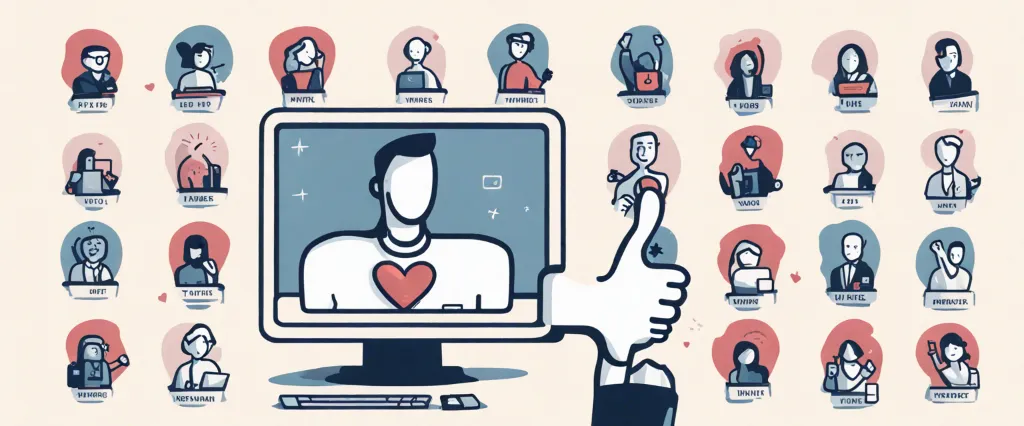In Jon Ronson’s thought-provoking book, “So You’ve Been Publicly Shamed,” the author delves deep into the dark world of online shaming and its far-reaching consequences. Known for his investigative journalism and knack for exploring the eccentricities of human behavior, Jon Ronson peels back the layers of public shaming in the age of social media. Through a collection of captivating and often unsettling stories, he examines the phenomenon of public humiliation and its profound impact on individuals’ lives. With his insightful writing style and meticulous research, Ronson navigates the complexities of online shaming, revealing its power to not only destroy reputations but also eradicate empathy and forgiveness. Through his exploration, Ronson challenges societal norms and urges readers to ponder the consequences of participating in this virtual public square.
Chapter 1: The Power of Public Shaming: Examining the Phenomenon in the Digital Age
Chapter 1 of “So You’ve Been Publicly Shamed” by Jon Ronson delves into the power of public shaming in the digital age. The chapter begins with the story of a woman named Justine Sacco, who posted a seemingly racist tweet before boarding a flight. Upon landing, she discovered that her tweet had gone viral, and she had become the target of immense public outrage and online shaming.
Ronson explores the emergence of public shaming in the online world, emphasizing its potential to destroy lives and reputations. He highlights how social media platforms have provided individuals with an unprecedented ability to participate in public shaming, often leading to severe consequences for those at the receiving end.
Throughout the chapter, Ronson investigates the psychology behind people’s participation in public shaming. He interviews individuals who have been publicly shamed and finds that they often experience intense feelings of shame, fear, and isolation. He also explores the audience’s motivation to take part in shaming, pointing out the inherent human desire to be part of a mob and the sense of moral superiority that comes with it.
Moreover, the narrative dissects the impact of online shaming on individuals’ lives beyond the immediate backlash. Ronson explores the long-lasting effects on careers, relationships, and mental well-being, illustrating that once something is on the internet, it can be virtually impossible to escape its consequences.
In conclusion, Chapter 1 of “So You’ve Been Publicly Shamed” introduces the reader to the power and consequences of public shaming in the digital age. It establishes the premise for Ronson’s exploration of various case studies and personal interviews, aiming to understand why public shaming has become a prevalent phenomenon in contemporary society.
Chapter 2: The Anatomy of a Shaming: Unraveling the Dynamics and Consequences
Chapter 2 of “So You’ve Been Publicly Shamed” by Jon Ronson delves into the anatomy of shaming and examines the dynamics and consequences that arise from public shame. Ronson introduces two primary case studies to illustrate the effects of shaming: Jonah Lehrer, a bestselling author caught fabricating quotes, and Justine Sacco, a woman whose career was destroyed due to a misguided tweet.
The chapter begins with Ronson exploring the psychological state of shamed individuals, highlighting their vulnerability and the overwhelming emotions they experience, such as fear, anger, and humiliation. He emphasizes how social media platforms amplify the destructive power of public shaming, enabling an often faceless mob to attack and ostracize a person globally.
Ronson also examines the tendency for shame to escalate quickly and the role of perceived righteousness within shaming campaigns. He illustrates how individuals who join the shaming often do so to maintain their own perceived moral standing and protect themselves from potential backlash. Ronson suggests that shaming has become a form of entertainment for modern society, compelling people to participate for personal gain or catharsis.
Furthermore, the chapter explores the long-term consequences of shaming on the individuals targeted. Lehrer, for instance, faced severe public scrutiny and suffered a decline in his mental health, whereas Sacco lost her job and faced significant social isolation. Ronson highlights the disproportionate punishment that might not match the severity of the transgressions, ultimately questioning whether shaming truly brings about societal progress or simply perpetuates a cycle of suffering.
In summary, Chapter 2 examines the anatomy of shaming and its consequences, illustrating its destructive and often disproportionate impact on individuals. Ronson raises important concerns about the role social media plays in facilitating the spread of shame and questions the overall efficacy of public shaming as a means of social justice.
Chapter 3: The Internet’s Role: Exploring the Influence of Social Media in Public Shaming
Chapter 3 of “So You’ve Been Publicly Shamed” by Jon Ronson explores how social media platforms play a significant role in public shaming incidents and their consequences. Ronson begins by recounting the story of Justine Sacco, a PR executive who tweeted a distasteful joke about AIDS before boarding an international flight. By the time she arrived at her destination, her tweet had gone viral, resulting in intense public backlash, job loss, and immense humiliation.
Ronson delves into the dynamics of social media shaming and how it can quickly snowball into a frenzy of collective outrage. He examines the online mob mentality that forms as people participate in the public shaming of individuals. Ronson interviews various internet users who have been involved in such incidents and highlights the influence of anonymity and the desire to be part of a high-visibility moral crusade.
The author also emphasizes the role of major online platforms, like Twitter, in facilitating and amplifying public shamings. He discusses how the instantaneous nature of social media allows people to participate in public humiliation without fully considering the consequences. Ronson argues that while online shaming has the potential to hold individuals accountable, it often overshoots its purpose, leading to disproportionate and merciless punishment.
Furthermore, Ronson examines the concept of “context collapse” in online shaming, where a person’s past actions or words can be easily taken out of context and used to shame them. He describes the devastating impacts of internet shaming on the lives and mental well-being of those targeted.
Overall, Chapter 3 of “So You’ve Been Publicly Shamed” explores how social media platforms have become catalysts for promoting and perpetuating public shaming incidents, examining the psychological dynamics behind online mobs and the severe consequences faced by those subjected to public humiliation.
Chapter 4: The Targets: Stories of Individuals Caught in the Crosshairs

Chapter 4 of “So You’ve Been Publicly Shamed” by Jon Ronson delves into the stories of several individuals who have fallen victim to public shaming. These people found themselves caught in the crosshairs of internet mobs and experienced the devastating consequences of being publicly humiliated.
One of the individuals Ronson features is Jonah Lehrer, a popular science writer who was exposed for fabricating quotes in his work. Lehrer’s downfall began when it was discovered that he had recycled his own material without attributing it, which further led to the unearthing of his fraudulent quotes. The online backlash was immense, with Lehrer being ridiculed and condemned for his actions. He ultimately lost his job, his reputation was ruined, and he retreated from the public eye.
Ronson also highlights the case of Justine Sacco, a woman who made an ill-advised joke on Twitter before boarding a long flight. The tweet, which was deemed as racist and insensitive, rapidly went viral and she became a target of massive public outrage. By the time she landed, her life had completely unraveled, as she faced widespread hatred, loss of her job, and an irreparably tarnished reputation.
The chapter also explores the story of Lindsey Stone, who was subjected to intense public shaming after a prank photograph at Arlington National Cemetery went viral. Lindsey, like the other targets, experienced extreme consequences, such as unemployment and a pervasive sense of shame.
Through these stories, Ronson illustrates the power of public shaming in the age of social media. He emphasizes how individuals can be swiftly and mercilessly attacked by online mobs, leading to the destruction of their personal and professional lives. Ronson’s exploration of these stories serves as a cautionary tale about the dangers and pitfalls of public shaming in our modern society.
Chapter 5: The Mob Mentality: Understanding the Psychology of Online Shaming
Chapter 5 of “So You’ve Been Publicly Shamed” by Jon Ronson delves into the topic of online shaming and its psychological underpinnings. Ronson begins by discussing the story of Lindsey Stone, who posted a picture on Facebook where she jokingly posed near a sign asking for silence and respect at Arlington National Cemetery. The image went viral, leading to an enormous backlash and online shaming.
Ronson explores how online shaming can be likened to a mob mentality. He references Stanley Milgram’s famous obedience experiments, highlighting how people tend to follow the actions of others without questioning the morality or consequences. This phenomenon applies to online shaming as well, as individuals join the mob without fully reflecting on their own contribution or considering the humanity behind the target.
The author introduces the idea of transgression tribes, groups of online users who actively seek out controversial tweets or statements to attack and shame the person responsible. Ronson explains that being part of such a tribe allows people to feel morally superior and part of a community, encouraging them to participate in the shaming with fervor.
Ronson also touches on the infamous case of Justine Sacco, whose offensive tweet about AIDS in Africa caused a global outrage within hours. The author explores the psychological aspects behind the public’s reaction, highlighting the power dynamics at play and the thrill people experience when participating in mass online shaming.
In conclusion, Chapter 5 of “So You’ve Been Publicly Shamed” uncovers the psychology behind the online shaming phenomenon. Ronson highlights the role of mob mentality, transgression tribes, and the desire for moral superiority that often leads individuals to participate in public shaming without considering the consequences or empathizing with the target.
Chapter 6: Redemption and Forgiveness: Can Shamed Individuals Rebuild Their Lives?
Chapter 6 of “So You’ve Been Publicly Shamed” by Jon Ronson examines the concept of redemption and forgiveness for individuals who have been publicly shamed. Ronson explores various stories and cases to understand if shamed individuals can rebuild their lives after enduring severe public humiliation.
He begins by discussing the story of Jonah Lehrer, a popular science writer who was exposed for fabricating quotes in his book. Lehrer faced intense online backlash, lost his job, and felt unable to reintegrate into society. Ronson delves into Lehrer’s attempts at redemption, as he presents evidence of remorse and seeks to make amends. Despite showing genuine contrition, Lehrer still struggles to overcome the stigma of his shame.
Ronson then explores the story of Lindsey Stone, a woman who was globally shamed for posing inappropriately at Arlington National Cemetery. She faced immense backlash online, lost her job, and became a pariah. Stone navigates a difficult path to redemption, seeking therapy and actively learning from her mistakes. However, she continues to face extreme difficulty in regaining her normal life due to the long-lasting effects of public shaming.
The chapter concludes with Ronson attending a reintegration program called “Restorative Justice” for those who have been publicly shamed. The program aims to heal the relationships between the shamed individuals and their online critics. Ronson witnesses the power of empathetic conversations between the two parties and explores the potential for forgiveness and second chances.
In summary, Chapter 6 explores the challenging journey of shamed individuals seeking redemption and forgiveness. Despite their sincere efforts to rebuild their lives, the long-lasting effects of public shaming make it an arduous task to fully reintegrate into society.
Chapter 7: The Ethics of Shaming: Debating the Boundaries and Consequences
Chapter 7 of “So You’ve Been Publicly Shamed” by Jon Ronson delves into the ethics surrounding public shaming, exploring the boundaries and consequences of this increasingly prevalent phenomenon. Ronson examines multiple case studies to shed light on the complexity of shaming in the digital age.
The chapter begins by focusing on Justine Sacco, a woman who tweeted a distasteful joke about AIDS before boarding a long-haul flight. By the time she landed, her tweet had gone viral, and the public had turned against her. Ronson questions whether the severity of the repercussions justified the offense and discusses the ethics of shaming someone for a single mistake.
Ronson then introduces Monica Lewinsky, who became a target for public shaming due to her involvement in the infamous Clinton-Lewinsky scandal. Despite the passage of time, she still experiences the lasting effects of online shaming in both her personal and professional life. This prompts Ronson to explore the boundaries of shaming, questioning whether its consequences should have an expiry date.
The author next examines the case of Adria Richards, a woman who called out a couple of men for making an inappropriate joke at a tech conference. While she initially received support for addressing sexism, the online backlash that followed was overwhelming. Ronson evaluates the consequences of this incident, considering whether the public’s response went beyond what was appropriate or necessary.
Overall, Chapter 7 of “So You’ve Been Publicly Shamed” raises ethical dilemmas surrounding the act of shaming individuals online. Ronson challenges readers to think critically about the boundaries and long-term consequences of public shaming, ultimately encouraging a more nuanced understanding of this controversial practice.

Chapter 8: Moving Forward: Navigating a World of Accountability and Compassion
Chapter 8 of “So You’ve Been Publicly Shamed” by Jon Ronson focuses on the aftermath of public shaming and how individuals strive to move forward in a world that demands both accountability and compassion. Ronson explores the stories of various individuals who have been subjected to public shaming, analyzing their experiences and the different paths they take to navigate through it.
One of the key themes in this chapter is the long-lasting impacts of public shaming. Ronson reveals that shame can leave an indelible mark on individuals’ lives, affecting their relationships, careers, and self-esteem. Despite the passage of time, the consequences continue to haunt them.
Ronson discusses the case of Justine Sacco, who faced an overwhelming backlash after tweeting an insensitive joke about AIDS. He delves into her journey of trying to rebuild her life and the emotional toll it has taken on her. Ronson also highlights the experiences of others, such as Jonah Lehrer and Mike Daisey, who faced similar fates in the court of public opinion. Their attempts at remorse and redemption are met with mixed responses.
Additionally, the chapter addresses the popular belief that public shaming can lead to positive social change. Ronson questions the impact of this form of justice, citing examples where shaming has not produced significant change or has unintended consequences. He explores the dangers of mob mentality and the destructive power of online shaming, which can often escalate quickly and uncontrollably.
Throughout the chapter, Ronson emphasizes the need for both accountability and compassion in dealing with public shaming. He argues that while it is crucial to hold individuals responsible for their actions, it is equally important to approach them with empathy and allow room for growth and redemption.
In summary, Chapter 8 of “So You’ve Been Publicly Shamed” delves into the long-lasting effects of public shaming on individuals and society. It explores various cases, highlighting the challenges faced by those who have been publicly shamed and the dynamics of accountability and compassion in the aftermath.
After Reading
In conclusion, “So You’ve Been Publicly Shamed” by Jon Ronson offers a profound exploration of the age of internet shaming and its consequences. Ronson delves into various case studies, where individuals from different walks of life experience the harsh realities of public humiliation and shame. He raises thought-provoking questions about the blurred boundaries between public and private life, the power dynamics of online mobs, and the long-lasting impact of being publicly shamed. Through engaging storytelling and personal narratives, Ronson emphasizes the need for empathy, understanding, and forgiveness within the realm of digital culture. This book provides valuable insights into the dangers of online shaming and reminds us of the importance of compassion and humanity in the face of public judgment.
1. “Cancel Culture: The Rise of Public Judgment” by Megan Phelps-Roper – This book explores the phenomenon of cancel culture and its consequences on society. Phelps-Roper, a former member of the infamous Westboro Baptist Church, offers a unique perspective and delves into the psychology behind public shaming.
2. “I Can’t Believe I Tweeted That: Navigating the Social Media Age” by Ryan Holiday – Holiday writes a thought-provoking analysis of the dangers of social media, drawing upon real-life examples of public shaming incidents. He provides practical advice on how to handle the pitfalls of online interaction and emphasizes the importance of empathy in the digital age.
3. “Hate Inc.: Why Today’s Media Makes Us Despise One Another” by Matt Taibbi – Taibbi examines the current state of media, discussing how public shaming and sensationalism have become integral parts of the news cycle. Offering a critical analysis, he explores how this ‘hate-driven’ media landscape influences public perception and behavior.
4. “Sticks and Stones: The Power of Words in a Shaming Society” by Jonathon Coleman – In this book, Coleman delves into the impact of words in a society dominated by public shaming. Through case studies and extensive research, he explores the far-reaching consequences of verbal shaming and highlights the importance of fostering a compassionate and understanding culture.
5. The Coddling of the American Mind: How Good Intentions and Bad Ideas Are Setting Up a Generation for Failure” by Greg Lukianoff and Jonathan Haidt – This book examines the rising trend of intolerance and public shaming on college campuses. Lukianoff and Haidt argue that overly coddling individuals prevents the development of necessary resilience and fosters an environment that actively suppresses differing opinions. They discuss the importance of engaging in constructive dialogue and the dangers of excessive political correctness.




